


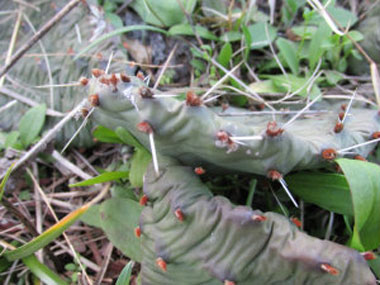
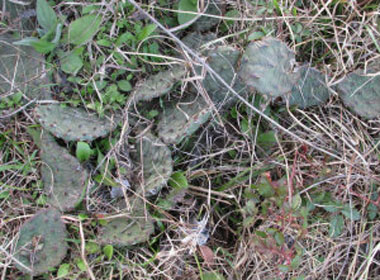
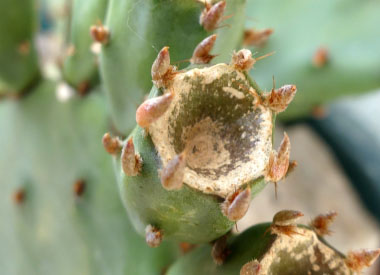
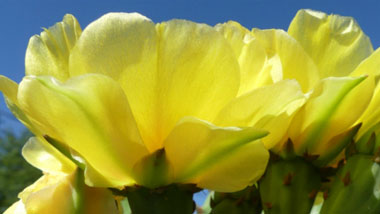
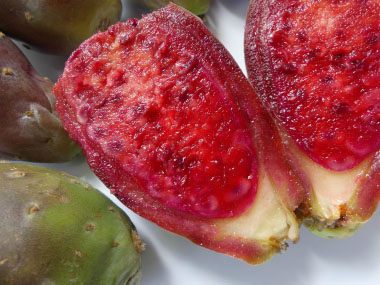
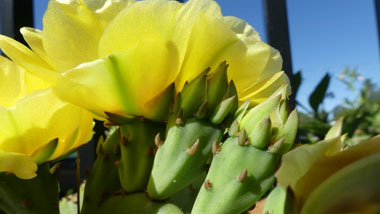
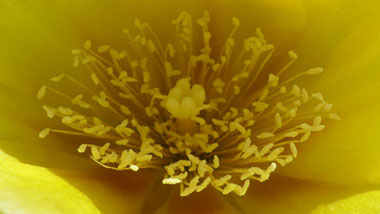
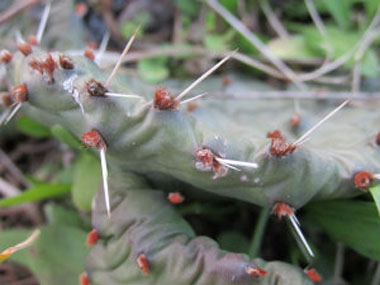
To support our efforts please browse our store (books with health benefits, etc.).
Prickly pear cactus represents fifteen species of the Opuntia genus in the North American deserts. The prickly pear cactus, originated in South America and eventually migrated northward into the valleys of the Andes and then into Mexico and the southern US. In addition to the Texas Prickly Pear there are: Opuntia strigil, Opuntia basilaris, Opuntia rufida, Opuntia phaeacantha, Opuntia engelmannii, Opuntia erinacea, Opuntia humifusa, Opuntia phaecantha, Pancake Prickly Pear, Opuntia chlorotica, Opuntia polycantha, Opuntia violacea, Opuntia violacea, Opuntia spinosbacca, and the Opuntia macrorhiza.
Distinguishing Features
These perennial plants are typically many-branched with distinctive jointed, fleshy, flattened, often rounded stem-segments known as cladodes or phylloclades. These are better known as the pads. The pads are actually modified branches or stems that serve several functions. They are used for water storage, photosynthesis and flower production. The fruits of most prickly pears are edible and sold in stores under the name tuna. Prickly pear pads are also cooked and eaten as a vegetable. They are also sold in stores under the name nopalito.
Flowers
Blooms during the April-June timeframe. Depending on the species depends on the colour or the flower. They can be yellow, orange, peach, cream, red or a ‘mild’ combination of two of these colours. (For example: orange/red, yellow/orange, or orange/red.)
 Fields
of Nutrition has medicinal benefits and vitamin/mineral content of Prickly Pear.
Fields
of Nutrition has medicinal benefits and vitamin/mineral content of Prickly Pear.
Leaves
No leaves.
Height
The prickly pears can grow to a height of 1.5 metres (5') and can spread to a diameter of 4.5 metres (15').
Habitat
Occurs from southern Canada to Argentina. Species of this genus are the most northern ranging of cacti, occurring to 56° north latitude in British Columbia and Alberta, Canada, and are the only cacti ranging into the far eastern states of the USA. Many species have been introduced into the Middle East and some have become naturalized and invasive. In South Africa, Australia and India they are invasive.
Edible Parts
The fruits and pads are edible. You must be VERY careful when working with a prickly pear. Please refer to Mother Earth News to learn how to properly eat a prickly pear.
Other Name
Texas Prickly Pear.
A special thank you goes out to Victoria Nicks, owner, administrator and editor of Decoded Everything. Ms. Nicks contributed the photos to help make this page possible! Her most recent successful launch was Decoded Plants.
Winter Survival Food Handbook

PDF Plant Magazines
Types of Wild Food
Geographic Zones Seasons
Disclaimer
EdibleWildFood.com is informational in nature. While we strive to be 100% accurate, it is solely up to the reader to ensure proper plant identification. Some wild plants are poisonous or can have serious adverse health effects.
We are not health professionals, medical doctors, nor are we nutritionists. It is up to the reader to verify nutritional information and health benefits with qualified professionals for all edible plants listed in this web site. Please click here for more information.
Why Edible Wild Food?
- Food costs are rising
- Free, wild food is readily abundant
- Wild food adds nutrition to your diet
- Wild food can help treat various medical conditions





